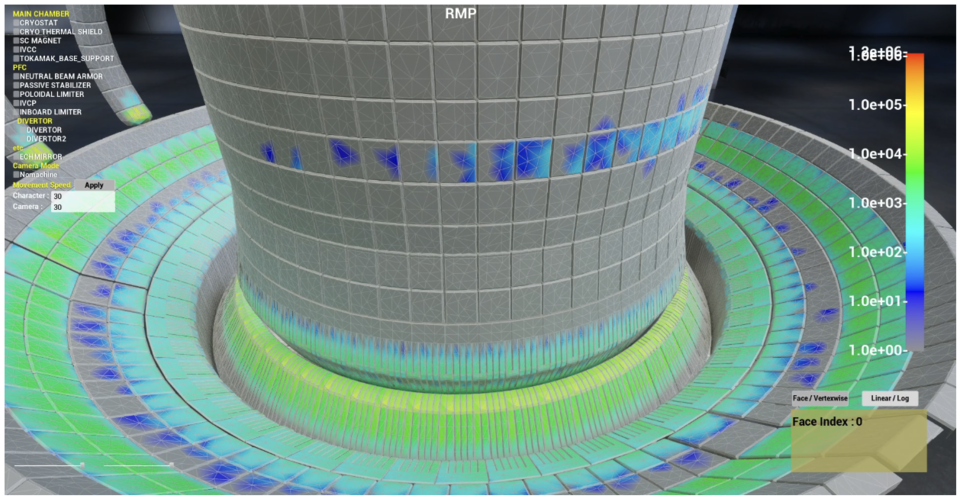The Ministry of Science and ICT (Minister Baek Hyun-hoon) announced on September 10th that it has developed “Virtual Tokamak Integration (Platform)” software, which uses Digital Twin technology to virtualize the tokamak nuclear fusion device in a digital space. With this achievement, a foundation has been secured to precisely verify the performance and safety of the core components of nuclear fusion devices.
Digital Twin is a technology that enables prediction and verification in various situations by implementing a real device or system in a virtual space. By applying it to nuclear fusion research, it is possible to simulate the operation of virtual devices and analyze their safety and performance, thereby enhancing research efficiency and reliability. Additionally, it is expected to reduce potential risks during the actual construction process of nuclear fusion reactors, leading to economic and time benefits.
The research team at the Korea Institute of Fusion Energy combined their own developed Digital Twin technology with research data from the superconducting nuclear fusion research device (KSTAR) to virtualize the tokamak device. Through supercomputing-based simulations, they have secured technology to precisely analyze the changes in the heat load applied to the inner wall of the nuclear fusion device.

This technology has been applied to the International Thermonuclear Experimental Reactor (ITER), verifying its reliability by predicting and analyzing the changes in heat load on the inner walls according to plasma operating conditions in a 3D virtual space. This case demonstrates that Korea’s Digital Twin technology can be utilized not only in KSTAR but also in ITER and other nuclear fusion devices. It is expected to be actively applied in future ITER operations and nuclear fusion device design and operation.
The virtual tokamak software is anticipated to contribute to the creation of new industries by being available not only for international joint research but also for domestic industrial applications. It is projected that this will enable South Korea to secure global leadership in the field of nuclear fusion research.
Jung Taek-ryeol, the director of the Public Convergence Research Policy at the Ministry of Science and ICT, stated, “We will actively respond to the international nuclear fusion energy realization competition by establishing a core technology acquisition strategy based on private cooperation and creating a sustainable research and industrial ecosystem through research and development support.”